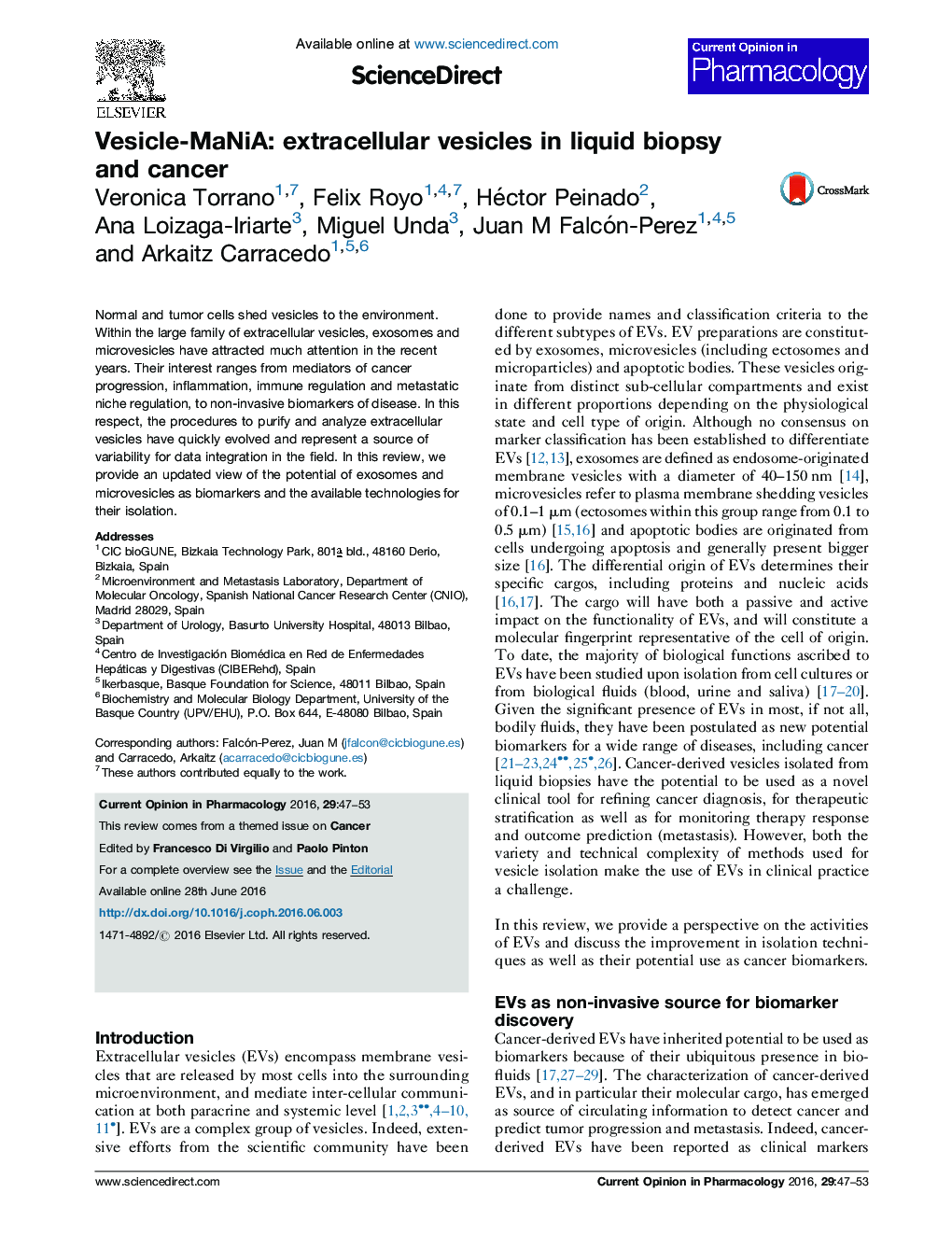| کد مقاله | کد نشریه | سال انتشار | مقاله انگلیسی | نسخه تمام متن |
|---|---|---|---|---|
| 5825857 | 1558119 | 2016 | 7 صفحه PDF | دانلود رایگان |

- Extracellular vesicles (EVs) are secreted virtually by all cell types and vary in cargo and composition.
- Cancer cells exhibit altered EV composition.
- The presence of EVs in biofluids support applicability as biomarkers for cancer detection, monitoring or classification.
- The improvement in EV isolation tools is a critical step in the future use of these particles as biomarkers.
Normal and tumor cells shed vesicles to the environment. Within the large family of extracellular vesicles, exosomes and microvesicles have attracted much attention in the recent years. Their interest ranges from mediators of cancer progression, inflammation, immune regulation and metastatic niche regulation, to non-invasive biomarkers of disease. In this respect, the procedures to purify and analyze extracellular vesicles have quickly evolved and represent a source of variability for data integration in the field. In this review, we provide an updated view of the potential of exosomes and microvesicles as biomarkers and the available technologies for their isolation.
Journal: Current Opinion in Pharmacology - Volume 29, August 2016, Pages 47-53